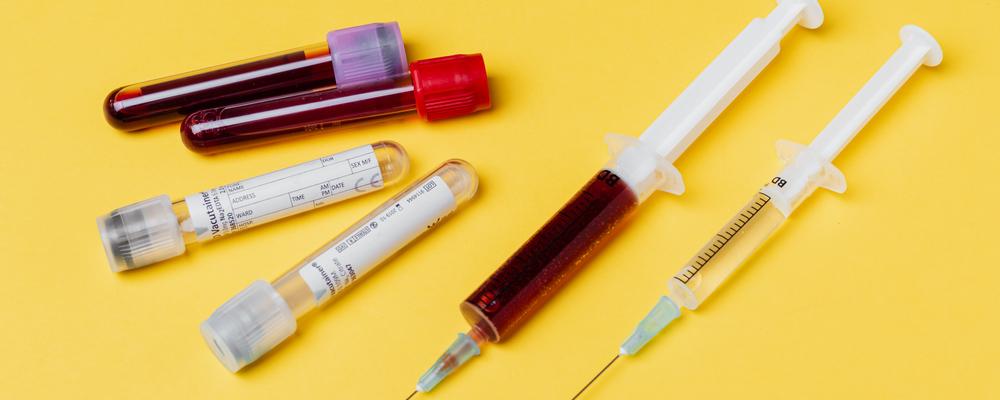
Biomarkers can lead to better treatment
David Eberhard's latest blog entry
[Posted on 6 June, 2017 by David Eberhard]
Psychiatric conditions have long been incredibly stigmatising for those affected by them. The topic has been avoided and consequently, mental disorders have also been heavily underdiagnosed. Coupled with the diverging views and ideologies within the field, the result was that a few decades ago, people suffering from mental problems had a hard time getting adequate help.
Social debate columns often address the state of psychiatric services. Many articles are very negative. The prevailing view is that psychiatric services are mired in a crisis, and hardly a day goes by without seeing headlines about the meteoric rise of mental unhealth. For many of us working in psychiatric services this is frustrating, as we have been able to observe over the last decades that the actual numbers indicate that psychiatry is probably the most successful medical specialty of all. In a very short period of time one has managed to cut the Swedish suicide rate in half, a trend likely mirrored in the rest of the West, although the stigma associated with suicide makes this difficult enough to measure that the statistics may not always be entirely reliable.
And yet, every other year we are reading about how suicides are increasing; if there is an increase from one year to the next, the media starts warning that psychiatric services are in decline. The following year, when suicides have once again decreased due to natural variation, there are no headlines in sight. That is how journalism operates. And this is also true of other institutions; we have a variety of authorities around the world whose sole mission is spreading alarmist messages. Ten years ago I wrote a book about this phenomenon. I called it “The national panic syndrome”; in other words, our collective fear of things that are almost dangerous. In my book “I trygghetsnarkomanernas land” (“In the land of safety junkies”) I expanded on this idea, observing that the better off we are, the more afraid we get of increasingly harmless things, but also that we have simultaneously come to have such high expectations of life in a safe and secure world that we end up disappointed if not everything goes our way on every single level. This phenomenon can be seen at any emergency psychiatry clinic. I worked for thirteen years at S:t Göran’s emergency psychiatry clinic in Stockholm, the last five as unit chief. When I started there, virtually no one ever sought help simply because their girlfriend had dumped them, or their boss was stupid, or their dog had died. Today, an average of five cases like that come in every day.
There just isn’t the same stigma associated with seeking psychiatric help as there once was, and this is partially a good thing. This shift has likely helped decrease the suicide rate, as more and more people seek help early and are thus provided adequate care before it is too late. The downside is that we have gone from a climate of significant underdiagnosis to an increasingly troubling trend of overdiagnosis. Everything is classified as mental disorder. People are treated with antidepressants even without the slightest trace of clinical depression, which results in the medication having no effect. This in turn leads to these medications undeservedly getting a bad reputation.
The same development has also occurred in the field of neuropsychiatry. ADHD has, just like all other psychiatric diagnoses, been underdiagnosed. People with severe disorders have not received any help. Today, affected individuals often get their diagnosis already during childhood, but those suffering from the most severe problems are at risk of being overlooked for treatment thanks to people whose diagnoses are highly dubious. And as the latter group’s problems are extremely marginal, they have plenty of energy left to spend on making lots of noise as soon as they do not get the help they feel that they need. Meanwhile, all the individuals who are actually facing terrible hardships, struggle to make their voices heard.
So even though psychiatric services are seeing a general positive development, there are major problems, just not the problems that certain journalists and alarmists seem to find. These days we are good at finding people with mental disorders, but we have to find better ways to determine which help should be given to which people. To that end, we need to be able to identify biomarkers. However, linking different markers to different psychiatric conditions has proved to be difficult. This is probably because the various syndromes are so fundamentally heterogeneous, and encapsulate individuals whose personalities diverge so greatly from one another that their potential biomarkers are likely to be completely different from the start. And so, it is my hope and conviction that the coming decades will bring exciting efforts to find entirely new ways of diagnosing.
[This is a blog. The purpose of the blog is to provide information and raise awareness concerning important issues. All views and opinions expressed are those of the writer and not necessarily shared by the GNC.]